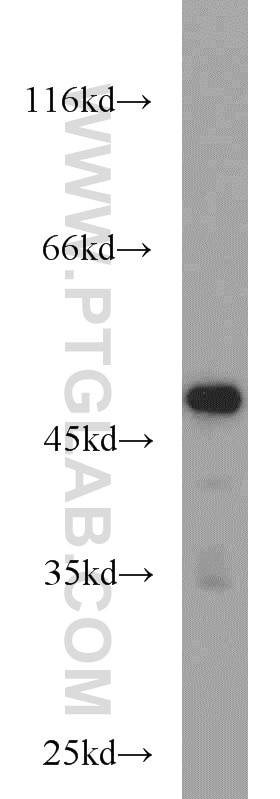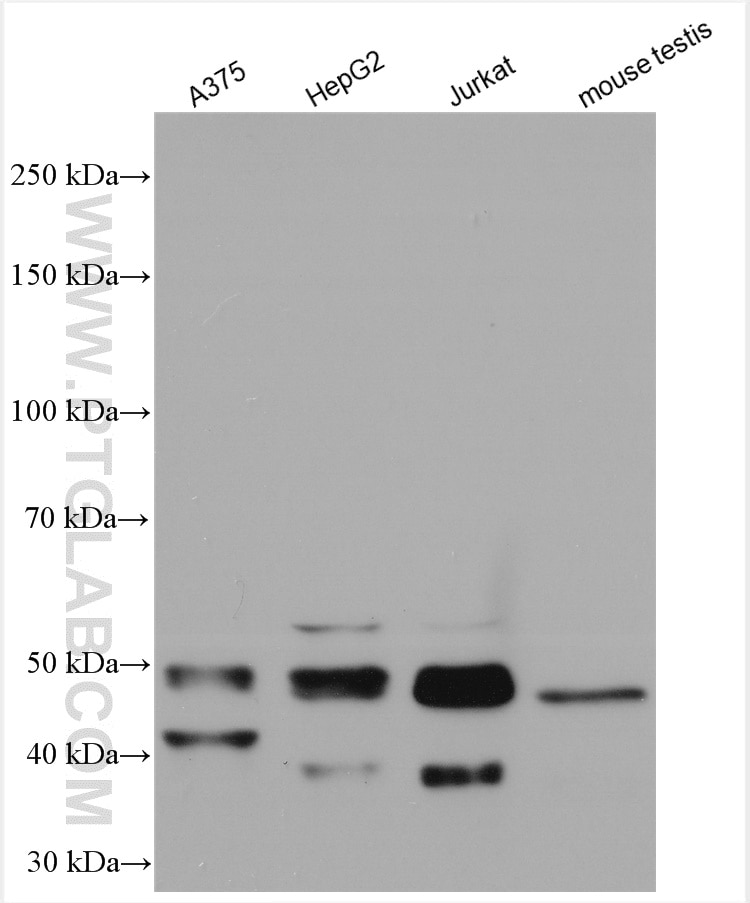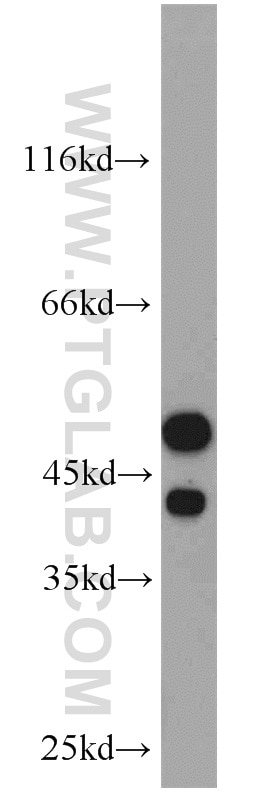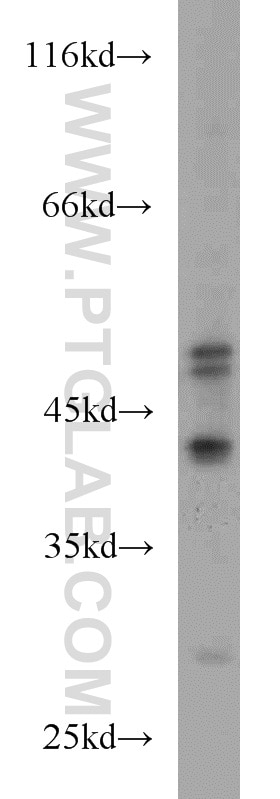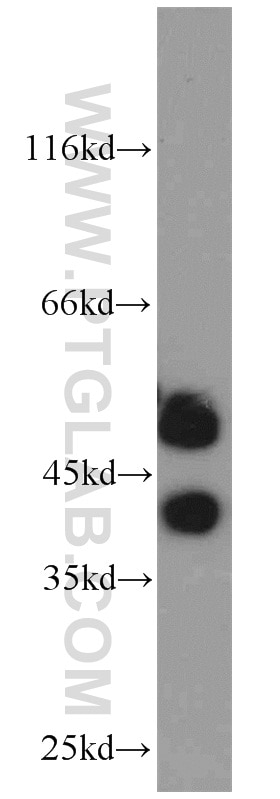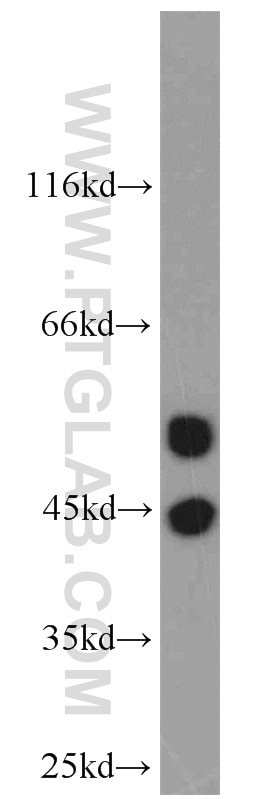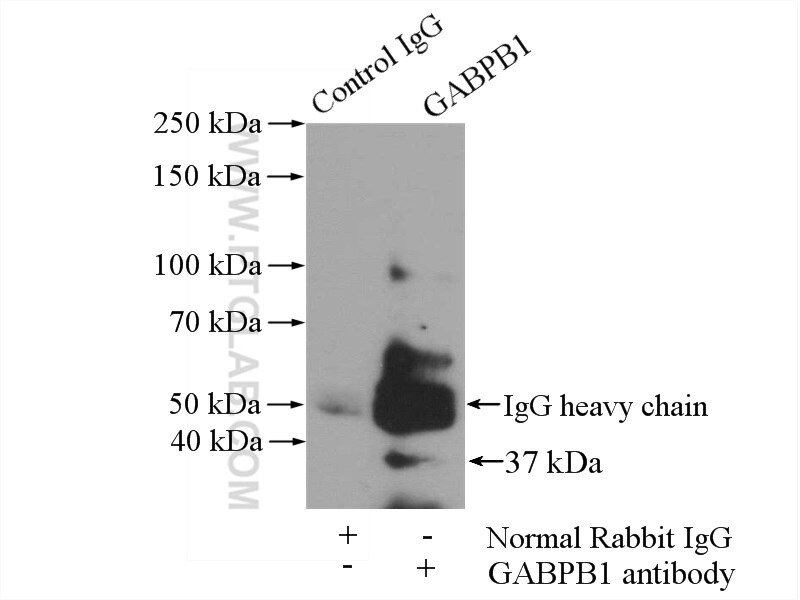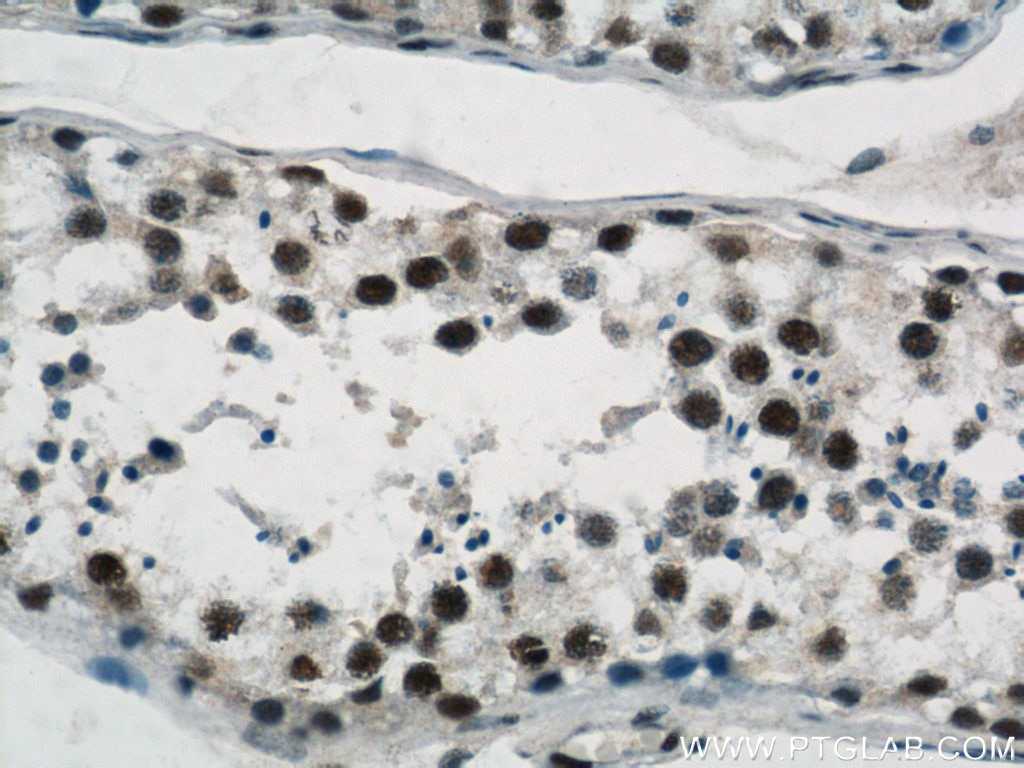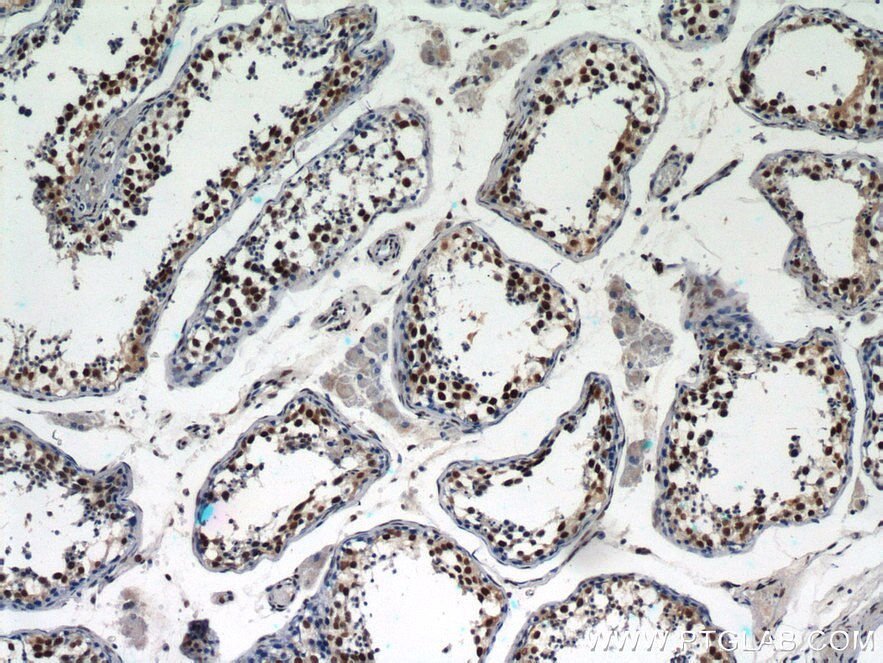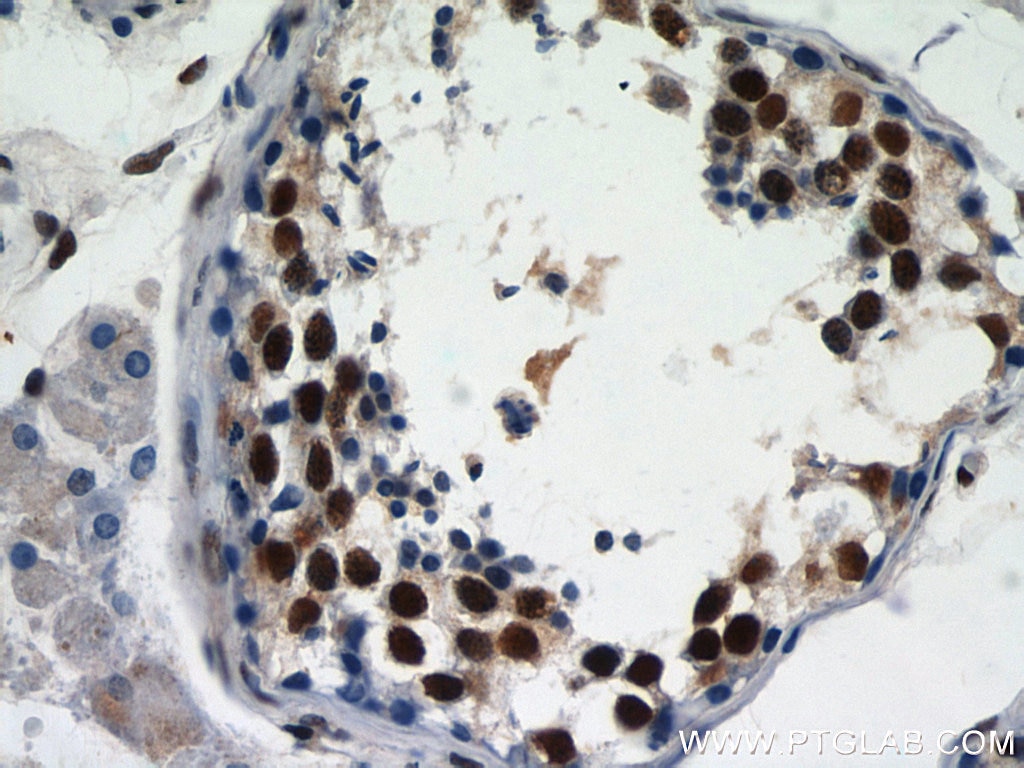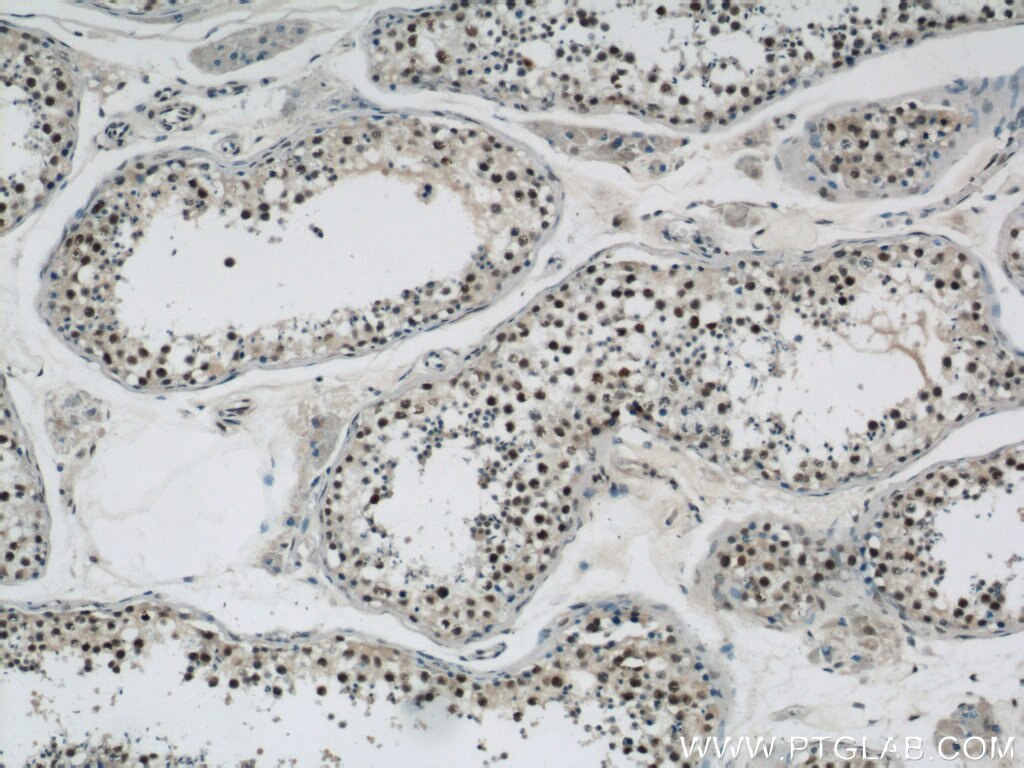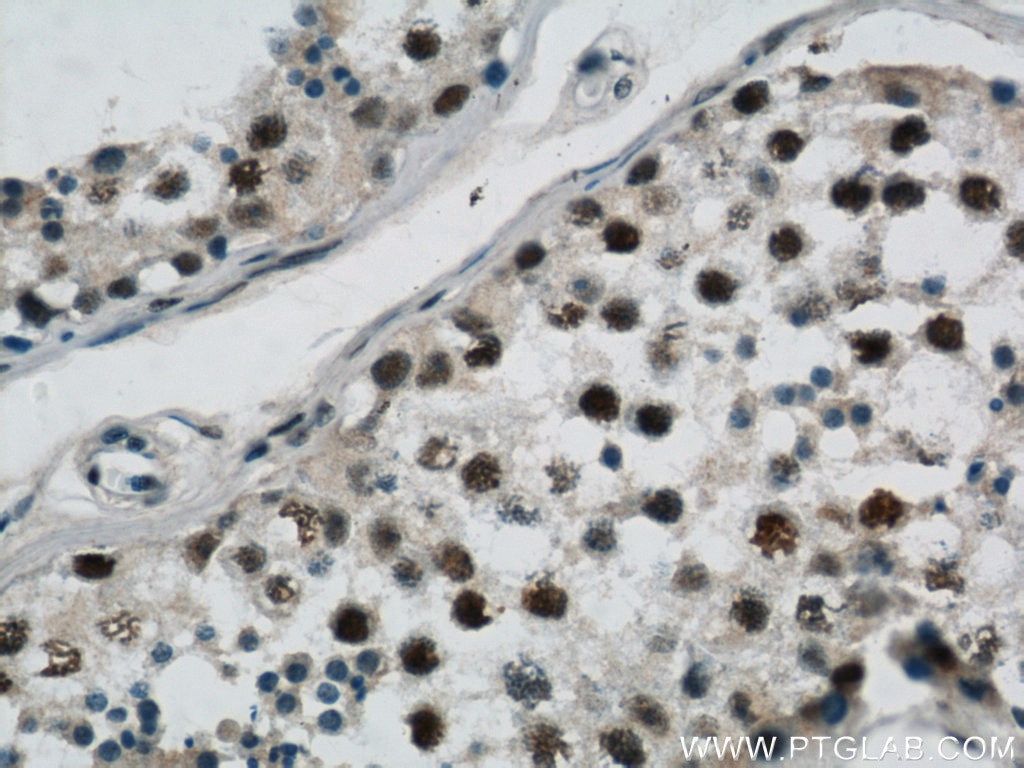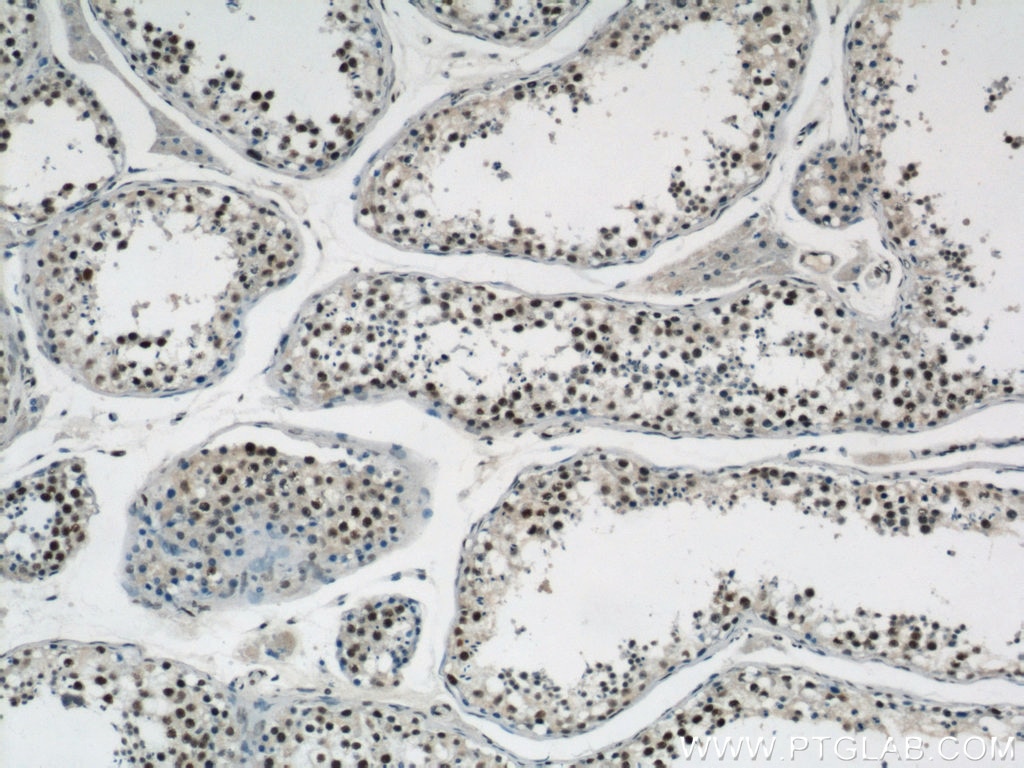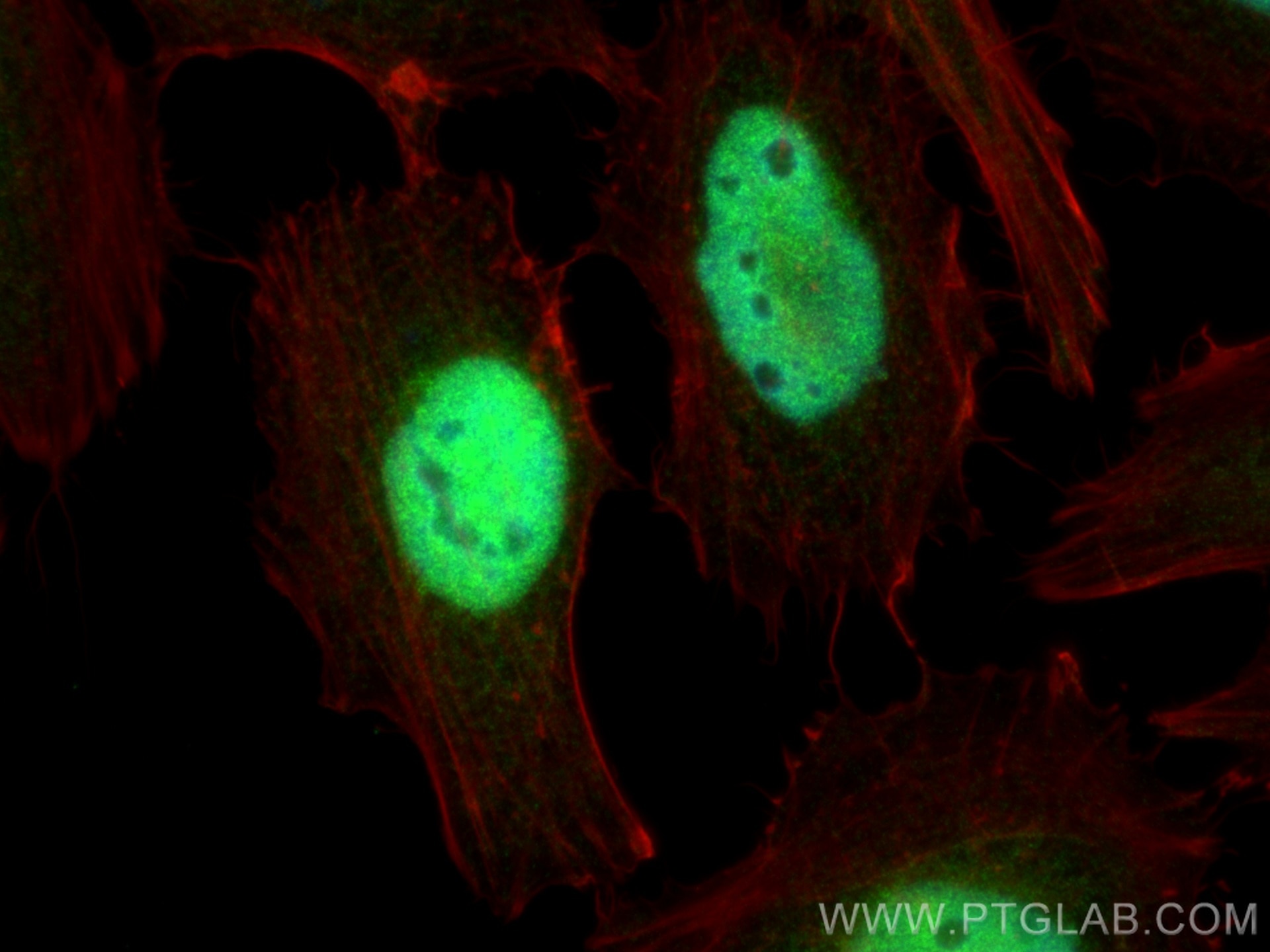- Phare
- Validé par KD/KO
Anticorps Polyclonal de lapin anti-GABPB1
GABPB1 Polyclonal Antibody for WB, IHC, IF/ICC, IP, ELISA
Hôte / Isotype
Lapin / IgG
Réactivité testée
Humain, rat, souris
Applications
WB, IHC, IF/ICC, IP, ELISA
Conjugaison
Non conjugué
N° de cat : 12597-1-AP
Synonymes
Galerie de données de validation
Applications testées
| Résultats positifs en WB | cellules A375, cellules HeLa, cellules HepG2, cellules Jurkat, cellules MCF-7, tissu pulmonaire de souris, tissu testiculaire de souris |
| Résultats positifs en IP | cellules HeLa |
| Résultats positifs en IHC | tissu testiculaire humain, il est suggéré de démasquer l'antigène avec un tampon de TE buffer pH 9.0; (*) À défaut, 'le démasquage de l'antigène peut être 'effectué avec un tampon citrate pH 6,0. |
| Résultats positifs en IF/ICC | cellules HeLa, |
Dilution recommandée
| Application | Dilution |
|---|---|
| Western Blot (WB) | WB : 1:1000-1:6000 |
| Immunoprécipitation (IP) | IP : 0.5-4.0 ug for 1.0-3.0 mg of total protein lysate |
| Immunohistochimie (IHC) | IHC : 1:50-1:500 |
| Immunofluorescence (IF)/ICC | IF/ICC : 1:500-1:2000 |
| It is recommended that this reagent should be titrated in each testing system to obtain optimal results. | |
| Sample-dependent, check data in validation data gallery | |
Applications publiées
| KD/KO | See 4 publications below |
| WB | See 7 publications below |
| IHC | See 2 publications below |
| IF | See 2 publications below |
| IP | See 1 publications below |
Informations sur le produit
12597-1-AP cible GABPB1 dans les applications de WB, IHC, IF/ICC, IP, ELISA et montre une réactivité avec des échantillons Humain, rat, souris
| Réactivité | Humain, rat, souris |
| Réactivité citée | Humain, souris |
| Hôte / Isotype | Lapin / IgG |
| Clonalité | Polyclonal |
| Type | Anticorps |
| Immunogène | GABPB1 Protéine recombinante Ag3208 |
| Nom complet | GA binding protein transcription factor, beta subunit 1 |
| Masse moléculaire calculée | 347 aa, 38 kDa |
| Poids moléculaire observé | 36-45 kDa, 47-53 kDa |
| Numéro d’acquisition GenBank | BC016910 |
| Symbole du gène | GABPB1 |
| Identification du gène (NCBI) | 2553 |
| Conjugaison | Non conjugué |
| Forme | Liquide |
| Méthode de purification | Purification par affinité contre l'antigène |
| Tampon de stockage | PBS with 0.02% sodium azide and 50% glycerol |
| Conditions de stockage | Stocker à -20°C. Stable pendant un an après l'expédition. L'aliquotage n'est pas nécessaire pour le stockage à -20oC Les 20ul contiennent 0,1% de BSA. |
Informations générales
GABPB1, also named as E4TF1B, GABPB, GABPB2, E4TF1-47 and E4TF1-53, is a transcription factor capable of interacting with purine rich repeats (GA repeats). It is necessary for the expression of the Adenovirus E4 gene. GABPB1 has 4 isoforms. The MW-of Beta 1 is 53kd and Beta-2 is 47kd(PMID:9525935). This antibody can recognize all the isoforms.
Protocole
| Product Specific Protocols | |
|---|---|
| WB protocol for GABPB1 antibody 12597-1-AP | Download protocol |
| IHC protocol for GABPB1 antibody 12597-1-AP | Download protocol |
| IF protocol for GABPB1 antibody 12597-1-AP | Download protocol |
| IP protocol for GABPB1 antibody 12597-1-AP | Download protocol |
| Standard Protocols | |
|---|---|
| Click here to view our Standard Protocols |
Publications
| Species | Application | Title |
|---|---|---|
Cancer Cell Disruption of the β1L Isoform of GABP Reverses Glioblastoma Replicative Immortality in a TERT Promoter Mutation-Dependent Manner.
| ||
Proc Natl Acad Sci U S A Cancer-specific loss of TERT activation sensitizes glioblastoma to DNA damage. | ||
Cell Rep The Ets transcription factor GABP is a component of the hippo pathway essential for growth and antioxidant defense.
| ||
Sci Rep LncRNA GABPB1-AS1 and GABPB1 regulate oxidative stress during erastin-induced ferroptosis in HepG2 hepatocellular carcinoma cells.
| ||
Biology (Basel) TERT Promoter Revertant Mutation Inhibits Melanoma Growth through Intrinsic Apoptosis. | ||
Brain Res Bull ZFP36 protects against oxygen-glucose deprivation/reoxygenation-induced mitochondrial fragmentation and neuronal apoptosis through inhibiting NOX4-DRP1 pathway. |
